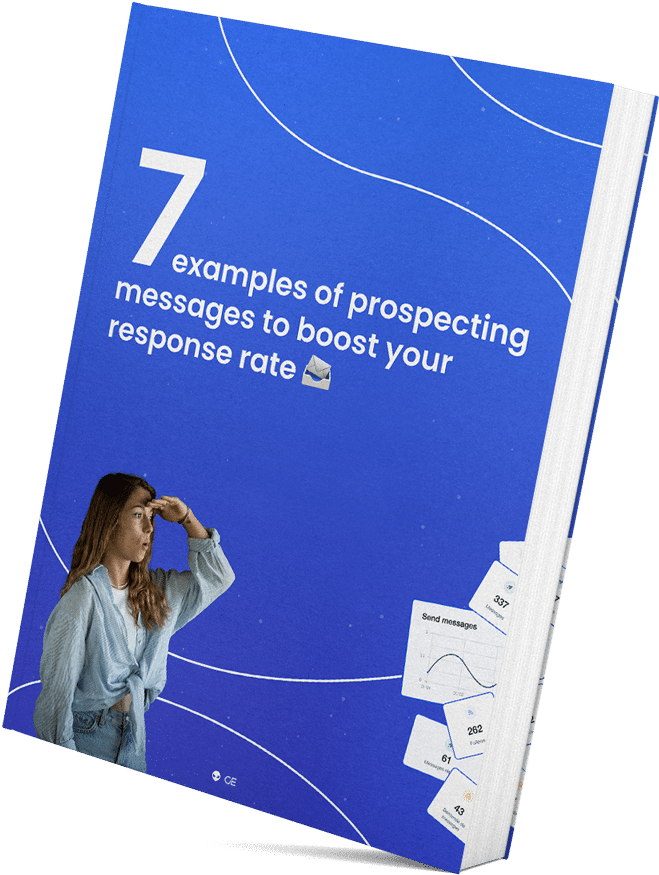The marketing strategy is one of the components of the B2B prospecting strategy. 🚀 In some cases, marketing strategies can be omnichannel or multichannel, using social networks and email marketing, for example. 📩 In this guide, we will show you what a company can do to combine various marketing objectives, depending on its business area. Let’s see it!⚡
What is a marketing strategy?
Initially, we can say that marketing strategies are developed by analyzing the strengths and weaknesses of a company’s marketing through a SWOT analysis and by studying its environment. 🌱
- Strengths: These are the internal advantages you can rely on to build your strategy and differentiate yourself from your competitors. 🦾
- Weaknesses: These are the drawbacks when there is a lot of room for improvement. Limited financial resources, lack of visibility, lack of international presence, etc. 😖
- Opportunities: Any opportunities that may arise and help you grow in the market. Technological novelty to reduce production costs, use of the website to reach new customers… 🤩
- Threats: These are external issues and constraints that can hinder or limit the development of your project. New regulations, the emergence of fierce competition and a recession that reduces global demand. 🙈
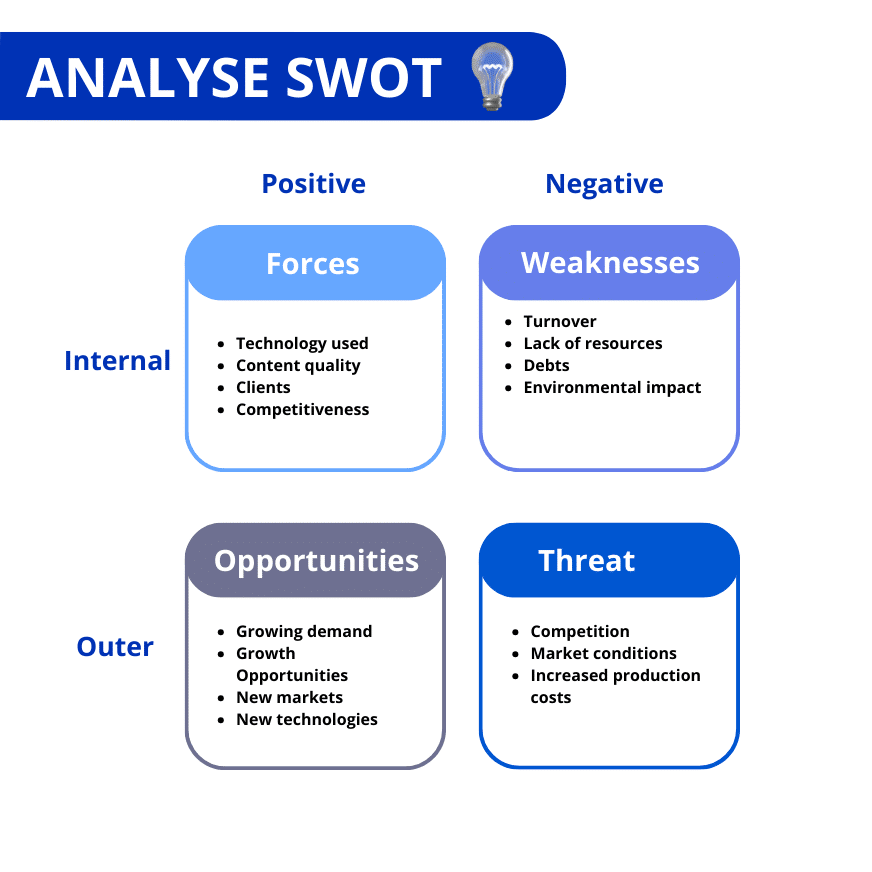
Marketing strategies are derived from marketing plans. 🧩 Therefore, operational marketing tools are part of your marketing strategy. 🎯
In addition, a marketing strategy is an indicator of all of a company’s goals and how to reach its target audience when promoting a new product or service. 📣
Strategic marketing : what does it mean?
Marketing strategies can be implemented to achieve a variety of goals such as: 👇
- Increase sales.
- Acquire new customers.
- Increase sales with existing customers.
- Expand market share.
- Improve customer retention.
- Launch an advertising campaign.
In addition, a good marketing strategy involves analyzing markets, competitors, ideal customers (“buyer persona”) and several other factors that your company wants to consider. 🔎 Although this strategy is long term, it should be reviewed and updated regularly if necessary to further improve results. 🏆
What is a business marketing approach?
The implementation of a marketing approach requires a successful marketing strategy. A marketing approach is a set of actions aimed at observing, anticipating or stimulating consumer needs and adapting a product or service to these identified needs. 🧐
In short, it covers all of the company’s efforts to establish its position in the market. This is broken down into several phases and takes place at the strategic and operational marketing levels. 🔥
- Strategic Marketing: 👇
To guide the company towards attractive economic opportunities. The purpose of strategic marketing is to lay the foundation for operational marketing. The purpose of strategic marketing is to identify the company’s mission, define objectives, develop development strategies and ensure a balanced product portfolio structure. 💼
Essentially directing the company to financial opportunities that match its resources and expertise.
- Operational Marketing: 👇
This is the most visible part, i.e. the “action” part, the creation of marketing tools and support (advertising, discussion, cold emailing, press releases, surveys, dashboards, competitive intelligence, etc.). This is the embodiment of strategic marketing and the implementation of marketing plans: the 4Ps. 💪
In addition, the marketing approach identifies different phases: analysis and diagnosis, definition of objectives, selection of options, prospecting tools and finally the development and evaluation of the marketing mix. 🧪
What is the definition of marketing strategy?
Marketing strategy or strategic marketing requires the implementation of several steps, as well as adapting its offer according to its sector of activity. 🤔
That’s why there is not a standard strategy for every business, but the principle remains the same. 👇
1) Develop a marketing plan
In the marketing approach, the design of a marketing plan includes an accurate and detailed diagnostic analysis and marketing strategies. It is imperative to fill in the SWOT analysis of the company in the marketing plan.
It also includes the segmentation and targeting you have defined. 🧲
The marketing plan includes the follow-up procedures for all actions taken.
Indeed, this document combines marketing and communication. As mentioned before, a part of the marketing plan must be dedicated to the corrective measures to be taken, if necessary. ✍️
2) Implement marketing actions
This is the active part of the marketing approach. It specifically documents the company’s marketing policies. The implementation of marketing actions is characterized by the marketing mix. 🌀
This is the visible part for the consumer, the mix consisting of the product, price, distribution, communication. 🗣️ You can then define the product characteristics and set the price, according to its your target.
It is about establishing your acquisition channels and the key players to market your product.
3) Monitor and control results
In the marketing approach, monitoring and analyzing the results are essential to ensure the success of your project. 🤔 How do you monitor your marketing activities?
Any monitoring should include three basic steps: 👇
- Verify that accuracy of standards achieved and goals are met.
- Compare the actual situation with the normal situation described in the marketing plan.
- Review and explain any deviations, through comprehensive audits.
In digital marketing, monitoring often follows the same process. However, the performance metrics or conversion leverage is different. 🧐
We talk about bounce rate, website conversion rate, number of clicks, etc.
4) Adapt and adjust your strategy
In case it turns out that the marketing actions are not achieving the expected results, adjustments are necessary. 🙏 It’s not always about changing the strategy, we start by changing the standards we set for ourselves.
It’s not about reconsidering your marketing goals, it’s about reconsidering the means to achieve them.
Of course, there are cases where the strategies used are wrong because of sudden changes in the market.
Then, you will have to change your approach. ⚠️
On the other hand, if the gap between your results and your expected results becomes significant, you can strengthen your marketing plan with a different strategy. 😬 For example, you can use inbound marketing to improve your brand image, build customer loyalty or attract new customers. 👌
Also, don’t forget the automation tools that will make your life easier, like Waalaxy! 👽
Find out more 🔥
What are the 3 main marketing strategies?
The generic strategy is a type of marketing strategy modeled by Harvard University professor Michael Porter in the 1980s. 📈 It is divided into three subgroups, aimed at establishing a competitive advantage for a company within a particular DAS, these are:
- The strategy of cost domination.
- The differentiation strategy.
- The focus strategy.
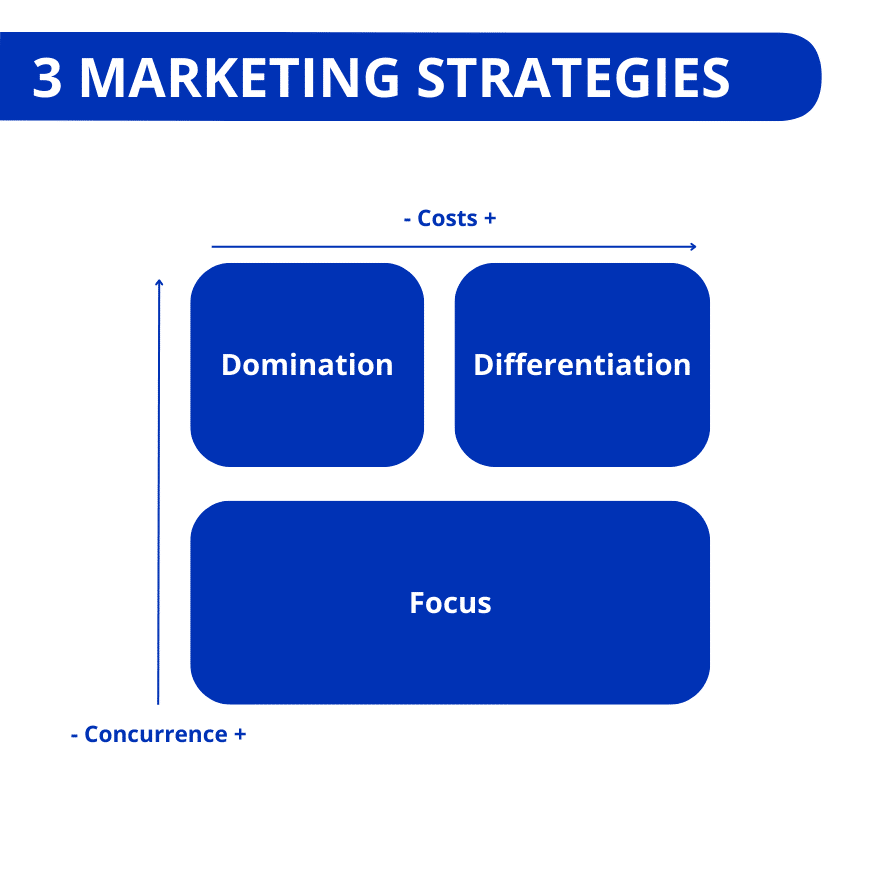
Let’s take a look at these 3 main strategies in detail! 💥
Marketing Strategy #1: Domination
The first form of general strategy is cost dominance. To implement this dominance strategy in the SBU (Strategic Business Unit), you need to find the best ways to reduce production costs on a large scale throughout the production chain, but without being imitated by the competition. 🤫
In this case, the surest way is to bring about innovation and market disruption to outperform competitors. This innovation aims to enable significant or slight reduction in unit prices and increase overall production with the same investment. 🌍
What are the steps of the it?
Operational marketing is divided into 4 different segments or the “4Ps”, also known as the marketing mix. 🍭
These four complementary points can simplify your marketing decisions, here they are: 👇
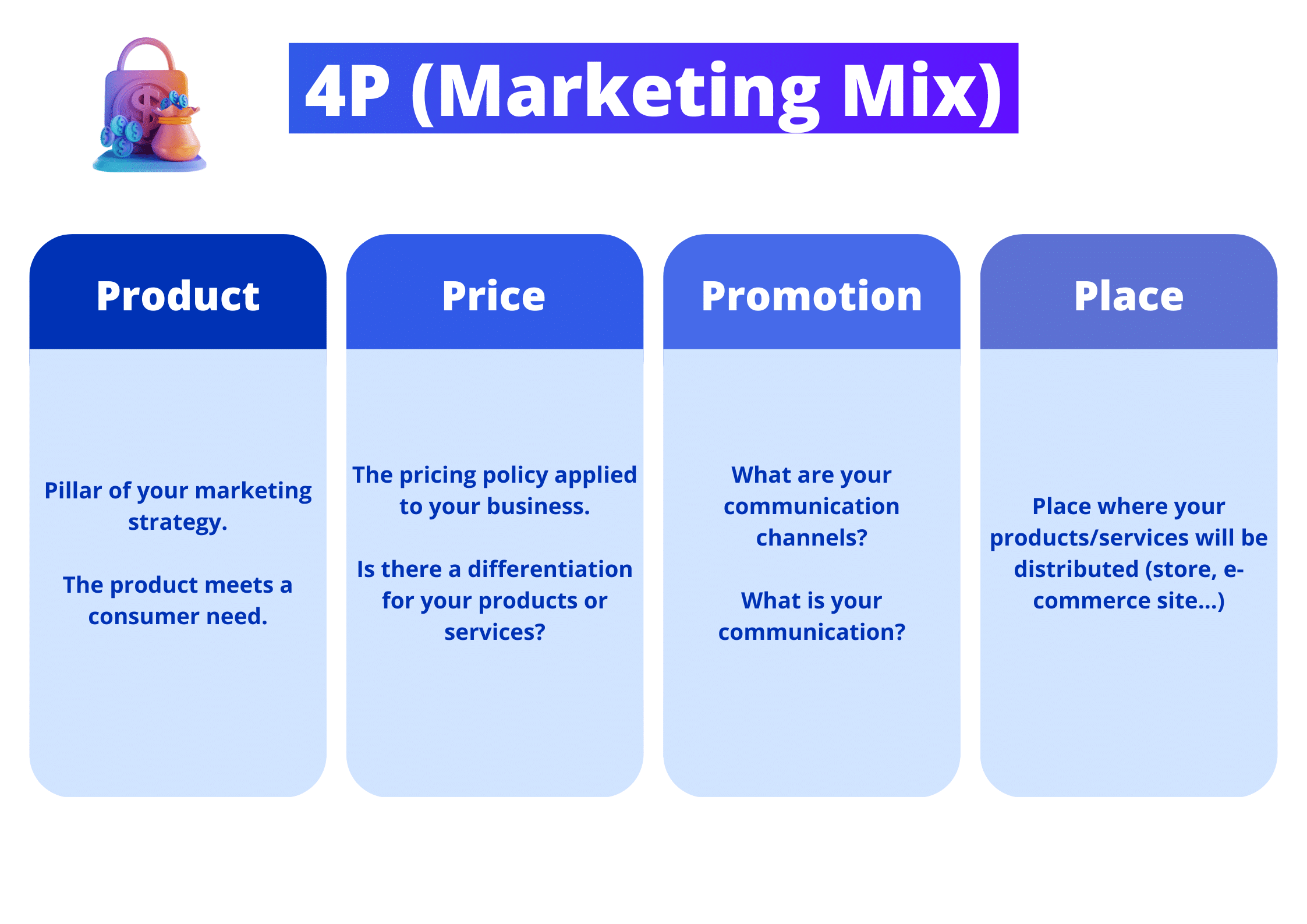
Marketing Strategy #2: Differentiation
The so-called generic differentiation strategy is developed by offering totally different offerings from the competition. Differentiation strategies go either through sophistication (luxury or “top-up” differentiation), or through purging (or “bottom-up” differentiation, lowering the range). 🏹
For this type of generic strategy to be appropriate, companies must offer products with a viable business model in terms of production volume and cost. 🤑 Indeed, the target audience must have sufficient purchasing power for the strategy to be profitable.
The market research allows measuring the commercial and strategic potential.
How to make an operational marketing strategy?
The 5Cs operational marketing is a segmentation to improve the integrity of the analysis and act more effectively. ⚡
Here is a detailed description of the characteristics of each: 👇
- 🔲 Company: Knowing the company itself is its value.
- 🔲 Collaborators: Distributors, suppliers, retailers, etc.
- 🔲 Competition: Marketing strategy (direct or indirect), market share, strengths and weaknesses, etc.
- 🔲 Clients: their expectations, their sources, their buying path – impulsive or not.
- 🔲 Context: Clearly defines the context for the implementation of operational marketing efforts (Christmas, Easter, etc).
Similar to the marketing mix or 4Ps, these 5Cs will help you stay on track with your marketing plan and be able to distinguish each strategic point more easily! 🙏
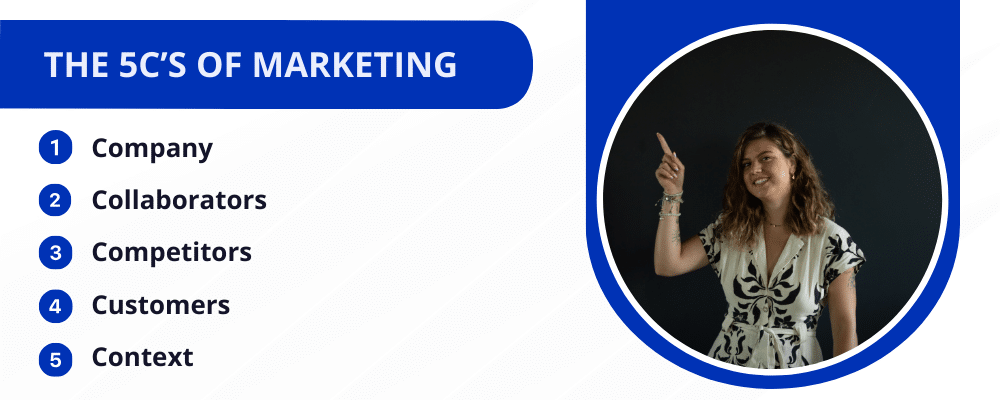
Marketing Strategy #3: The Focus
This generic strategy known as focus is about concentrating on products offered in very narrow market segments where companies are certain to break the competition without direct conflict. 💥
Position should allow you to make a profit, despite an inherently tight market. This strategy is often confused with a niche strategy. 💎
From there, let’s see how to choose your marketing strategy properly, once your goals are well-defined. I promise it will be easier than it sounds! 🎯
How do you establish a successful marketing strategy?
One of the key elements of a good marketing strategy is understanding customer needs and defining target markets. This allows you to better manage your campaigns and marketing channels, through: 🤓
- Segmentation and targeting: Segmentation is the process of dividing the market into similar subsets. These categories correspond to groups of consumers with the same expectations and similar reactions to marketing activities. 🤗
Once the market is segmented, targeting can define fundamental objectives. To be a viable target, the segment must meet the following conditions :
- Measurable: easily identifiable.
- Accessible: easy to reach.
- Exploitable: there are not too many competitors in the market.
- Profitable: offers business development potential. 🏹
These two notions are key to the success of your marketing strategy because it gets you off to a good start! If you’re doing everything right, but targeting the wrong people, all your marketing efforts will be in vain. 🙈
How to create a good marketing strategy?
To ensure a consistent approach to the market, marketing plans should be seen as structured between strategic and operational elements. 👐 It is necessary to start from an analysis of the context and focus on prospects to arrive at the ideal positioning of the offer through the value proposition. 🪙
Here are some important steps you can take to set up your marketing strategy and evolve it over time:
Analyze market opportunities
A marketing strategy is directly related to a company’s goals and should translate the company’s ambitions into market size. Its implementation is mainly based on the opportunities that arise. 👁️
The analysis can be translated into a more or less extensive market research. Based on the factors revealed, it will allow you to approach the market with full knowledge and determine a consistent approach to enter or strengthen it.
Through market research, different customer segments, their sizes, resources will be identified and analyzed. 📊
Make a good targeting of the clientele
To find the target customer, it is necessary to target a group of people with similar consumption behaviors. It would be interesting to extend this analysis beyond the potential end users of the product. In this targeting process, it would be interesting to consider several possible potential customer configurations. 🥸
Knowing how to position your product
Once the customers have been targeted, the challenge is to successfully position the product or service that corresponds to the needs of each one. It is then a matter of establishing a value proposition. Starting from the customer’s needs and expectations, from the consumer’s point of view, it is a matter of highlighting the advantages and benefits that the offer will bring. 🔥
Even if the value proposition must convince users, it must also allow the company to position itself in relation to the competition. This means highlighting the attributes of the product or service that will make the product or service unique in the market and give your offering an edge over competing offerings. 💯
Adjust your method if needed
The marketing strategy should also provide the means to evaluate the relevance of planned actions over time. ⌚ In addition to monitoring sales and ROI, it is particularly important to measure the effectiveness of the implemented processes, to ensure optimal distribution, to monitor customer satisfaction through after-sales service or to be able to gauge the popularity of the brand among target consumer groups. 😃
By performing different KPI checks, the company can discover new levers to enable improvements, things to optimize, get closer to the market and customers and meet their needs. ✅ Evaluating the relevance of actions and regularly surveying consumers can also be a source of new opportunities for the company.
Going to meet new customers and finding the best ways to meet their specific needs can lead to new development projects. 🌌
The market, like a company’s goals, is constantly changing. Monitoring allows you to spot these trends, anticipate changes in offerings, and adjust strategy as needed.
Depending on the situation, the company may consider new approaches, consider expanding into new markets, such as by implementing an internationalization strategy , or collaborative branding actions to get closer to a new customer segment. 🧨
What is an example of a successful marketing strategy?
To create an effective marketing strategy, you must first understand your audience and where they are most likely to be. 🔎
Then, you need to create a message that resonates with them and evokes emotional responses. 😍 To do this, you need to focus on the solution you are offering your audience.
Let’s look at 2 examples of marketing strategies that are notable in digital communications, in the international market: Netflix 🎥 and in France: Leroy Merlin. 🧙
Let’s see! 🤓
Netflix: a super personalized strategy
Netflix provides streaming entertainment services to millions of paying users in over 100 countries. 🪐 Digital marketing tactics include various campaigns and posts on social networks, such as Twitter and Instagram. 🤩
Their strategy on social media is to ask questions and create votes that encourage fans to continue the easy conversation and leads to trending topics. 😎
It also informs subscribers about new streaming content and suggests TV series and movies by sharing relevant posts on their official accounts. ✅
👉 Netflix’s digital strategy evolves along two parameters:
- A mass strategy to get the general public on board.
- A super personalized strategy when users are already subscribed to the service.

Thanks to its offbeat humor 👆 users feel connected with community managers and participate in added value processes. This is also one of the fundamental goals of digital marketing, to retain its audience. 💖
Netflix’s email marketing campaigns also aim to provide customers with personalized content. Each week, they provide examples of content that might interest their users. 😉
On the other hand, you can make your own email marketing strategy with Waalaxy’s multi-channel campaigns, find out how it works here! 🔥
Leroy Merlin: a hyper targeted strategy
The second example of an effective marketing strategy, is that of the DIY store Leroy Merlin, in France. 🥖
Leroy Merlin decided to implement a digital content strategy, based on video and targeted on selected areas. Aimed at both experienced DIYers and beginners. 💪
These videos are very popular with the general public. In addition, Leroy Merlin offers a tutorial website that provides more and more tips and best practices to help customers become self-sufficient. 💯

👉 Thus, this marketing strategy builds customer loyalty and attracts prospects by positioning the brand as an expert, being the top result in search engines!
What are the 4 types of marketing strategies?
In recent years, trends have been changing the world of marketing, forcing professionals to incorporate new approaches into their strategies. 🤗 But new things have to be open and adapt faster and faster with the desire to stay as close as possible to consumers.
However, there are as many marketing strategies as there are companies, and it’s never easy to find the best way around. Check out examples of effective marketing strategies to grow your business here. ⚡
#1 Content Marketing
Content marketing is nothing new. The idea behind this concept is to provide high quality non-profit content related to consumer interests in order to stay connected and indirectly serve the interests of the business. 😎
Recently, with the advent of the Internet and many other social networks (such as LinkedIn), content marketing has become widespread. From then on, consumers have found that they are less receptive to advertising because everyone can choose what content they want to consume and when they want to consume it. 🍝
As a result, advertisers need to take a variety of approaches to provide content that better meets consumer expectations, thus maintaining connectivity and increasing online awareness. ⭐
#2 Social Media Marketing
In just a few short years, social networks, like LinkedIn, have become the dominant platform for the media and prospecting industry.⚡
When members connect and share content among like-minded people , they also offer brands the opportunity to build relationships with consumers and integrate their customers into a community. 🤗
Social media marketing incorporates approaches and methods to implement, maintain and develop a consistent approach to serving brands on social networks.
One of the first challenges is to build relationships with consumers based on the exchange of ideas, discussion and collaboration. 🤝
This is why social platforms are also the gateway to the buying process! 💰
Don’t lose any more customers, and create a hyperefficient prospecting strategy by automating your LinkedIn campaigns. 😏
Watch The Demo 🪐#3 Storytelling marketing
Storytelling is now an important part of an effective marketing strategy. Whatever market you want to position yourself in, there are always more competitors and you need to differentiate yourself. You can play with the emotional value of your brand or company. 😯
Therefore, the goal of emotional marketing is to create a set of emotions and values so that your target audience connects with your brand or business.
Storytelling, which aims to convey a message by creating a sense of identity for the reader, is an important emotional marketing tool and helps to notoriety your brand. 🤩
Creating a unique story for your business, what inspired it, its value, or even creating a story around your brand is a common storytelling theme. The emotions you’re going for depend on the goals you’re pursuing with your copywriting. 🎯
#4 Influence Marketing
Conclusion: What are the different marketing strategies?
Marketing strategies are critical to the success of your business. 👌 By following these 6 steps, you’ll be able to develop your marketing strategy and get all the cards in your hand to achieve your goals: 🚀
- Define marketing objectives.
- Analyze the market.
- Determine the profile of the ideal customer.
- Monitor competitors.
- Define an action plan.
- Use effective tools.
- Test, verify, adjust!
Moreover, putting a product on the market means giving it a specific place in the minds of consumers compared to its competitors. Remember, consumers are putting you in a unique “box.” 📦
As a result, you can be the best performing or the cheapest in your market, but not the best performing and cheapest.
So how do you determine positioning: 👇
- Identify all competitors in the target market.
- Analyze the competitive advantages of all players in the market, including you.
- Analyze how consumers value their products/brands in a highly competitive environment and position yourself accordingly.
There are various positioning strategies to choose from, such as staying a market leader, attacking leaders head on, exploiting weaknesses of leaders, creating new areas. So, it’s up to you to choose the marketing strategy that fits you! 🔥
Inbound marketing vs. outbound marketing
If you want to take your marketing knowledge a little further… 🍃 Then let’s check out inbound and outbound marketing tactics! ✍️
Inbound marketing, relies on content marketing to create lead generation and is opposed to outbound marketing, which often relies on untargeted and intrusive ads. 🙊
With inbound marketing, the goal is to create a connection with prospects by offering them enriching content that matches their interests, without any commercial purpose (like this blog)! 😇

In general, it’s about using prospecting and advertising as acquisition channels. 🎯
In many cases, this contrasts with inbound marketing strategies, but the two complement each other and are much more effective when combined well. 🍳
Outbound marketing allows you to get more or less customers quickly. 🧲 While this strategy works well with big budgets, the downside is that it can get expensive and it’s only effective at the beginning of the marketing tunnel. 👀
👉 Use our Podawaa tool for your inbound marketing strategy, giving your LinkedIn posts a “boost” with engagement pods. 😉
🚀 Then, use our Waalaxy tool for your outbound marketing strategy, generating new leads on LinkedIn, and creating “cold emailing” campaigns. ❄️
Try Waalaxy Now 👩🚀FAQ Marketing Strategy
What is a digital marketing strategy?
Digital marketing strategies are based on a set of actions that involve using different online marketing channels to achieve predefined goals. 🏆
Therefore, including digital marketing in a company’s communication plan is essential for its success. In fact, in this ever-changing digital world, 🌐 the success of a product launch often depends on what companies do, and don’t do, in the area of online marketing. 🖥️
In digital marketing, marketers are free to use powerful analytics tools to measure the impact of an SEO strategy and content marketing to monitor demand, for example. 🧐
What are the steps to connect with the consumer ?
Here are the 7 steps to connect with the consumer, using digital marketing: 👇
- Define buyer personas.
- Set objectives.
- Choose your digital marketing tool.
- Assess existing digital marketing channels and available resources.
- Assess and plan internal content.
- Evaluate and plan external content
- Evaluate and plan for paid media.
Next, put all of these elements together to create a solid strategy. 🦾 Keep in mind that a digital marketing strategy is a set of actions that help you achieve your goals through multi-channel marketing. 🎢

Businesses also need to strategize for the long term. Therefore, it is useful to note the time of execution of each action in a dedicated marketing calendar. 🗓️
Which marketing strategy will you choose for your business?
The marketing strategy of a company depends not only on the details of the business sector it develops, but also on knowing the market, the state of the project… 💯 As explained earlier, there is no one strategy suitable for all companies. 🤷
However, it is possible to get an overview of strategies that can be implemented by the marketing team. Marketing strategies are tailored to each business and industry, but also to the target customer: 👇
- If you are in a young, growing or potential market: it is advisable to create a “pull marketing“.
- If you are in an emerging market: “Push marketing” is a possible technique. It consists in pushing the product towards the consumers, for example by setting up advertising means or by highlighting the product.
- If you operate in a stagnant or saturated market: The main objective is to increase market share and to focus on differentiation, specialization and diversification to differentiate yourself from competing offers on the market.
- If you operate in a mature but not saturated market, we will discuss penetration strategies that allow you to enter the market through a low pricing policy in order to gain market share from your competitors.
In today’s economy, it is no longer possible, nor profitable to create a product and see how to sell it afterwards… 🌬️ Now, we are in a period of supply overload which means that customers have a wide choice of similar products. 😖
What does it mean?
This is the reason why you need to identify the needs of the customers first, as well as the target customers before producing and marketing a product. This way, you will maximize the chances of your product or service meeting the needs of your customers, this is called the “product/market fit” analysis. 😉
There you have it! Now that you know the main marketing strategies, you can choose the marketing strategy that best fits your business! 👌





